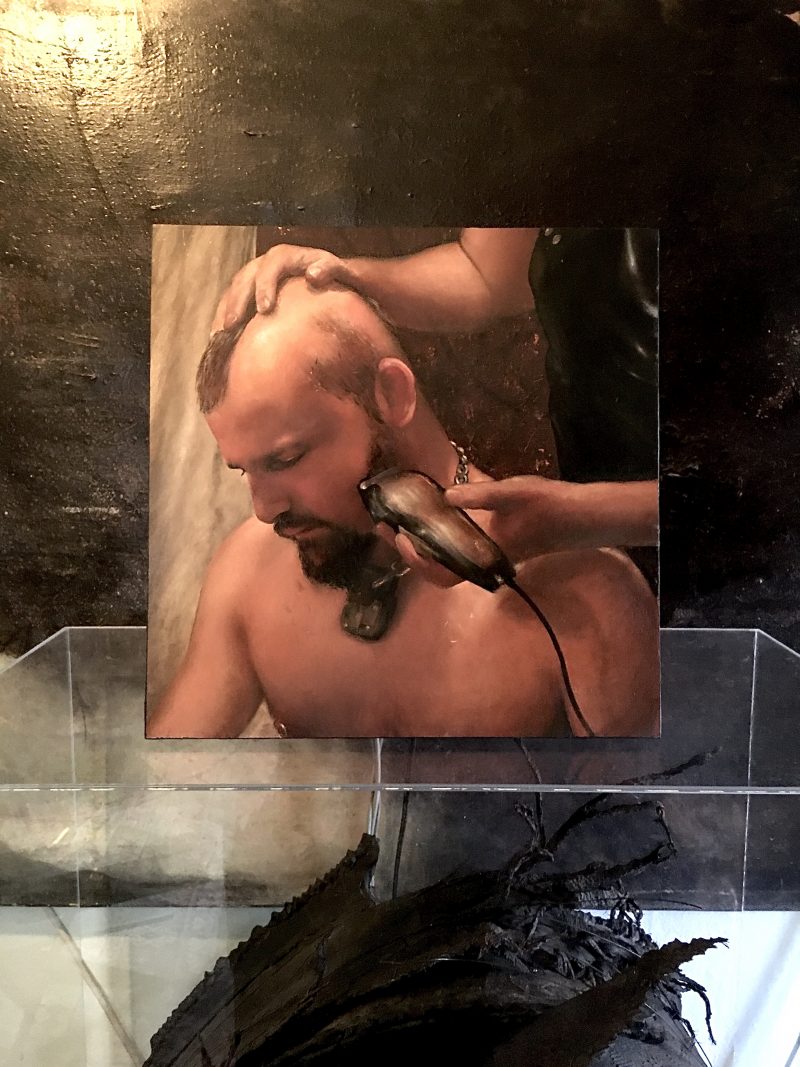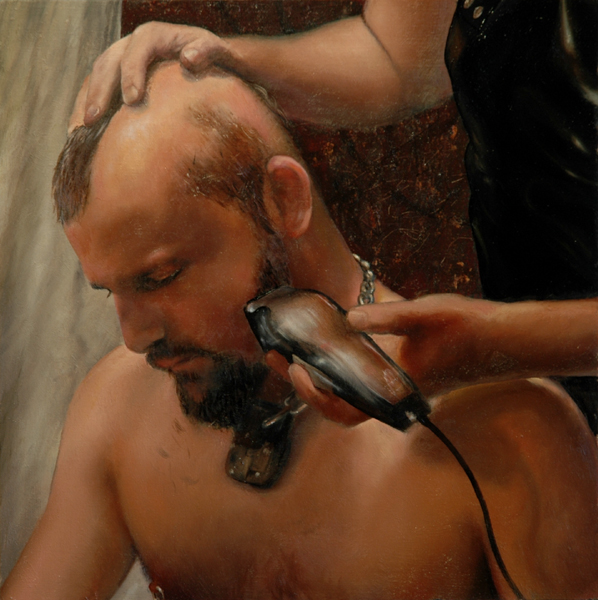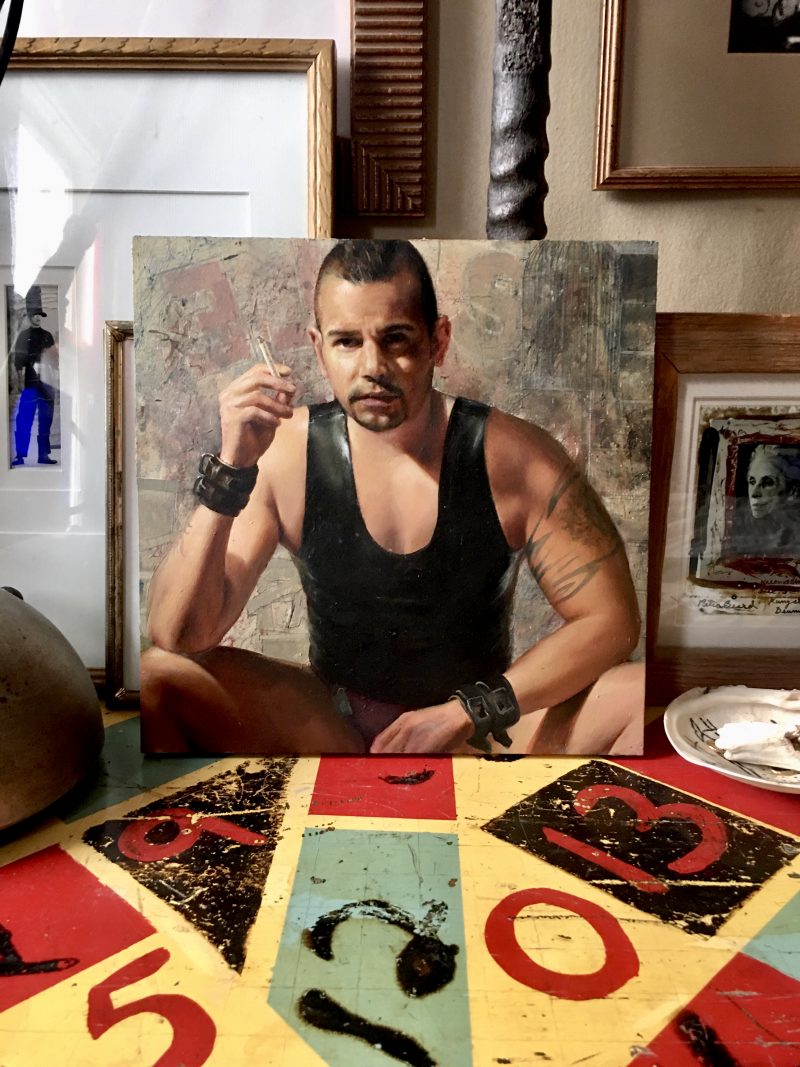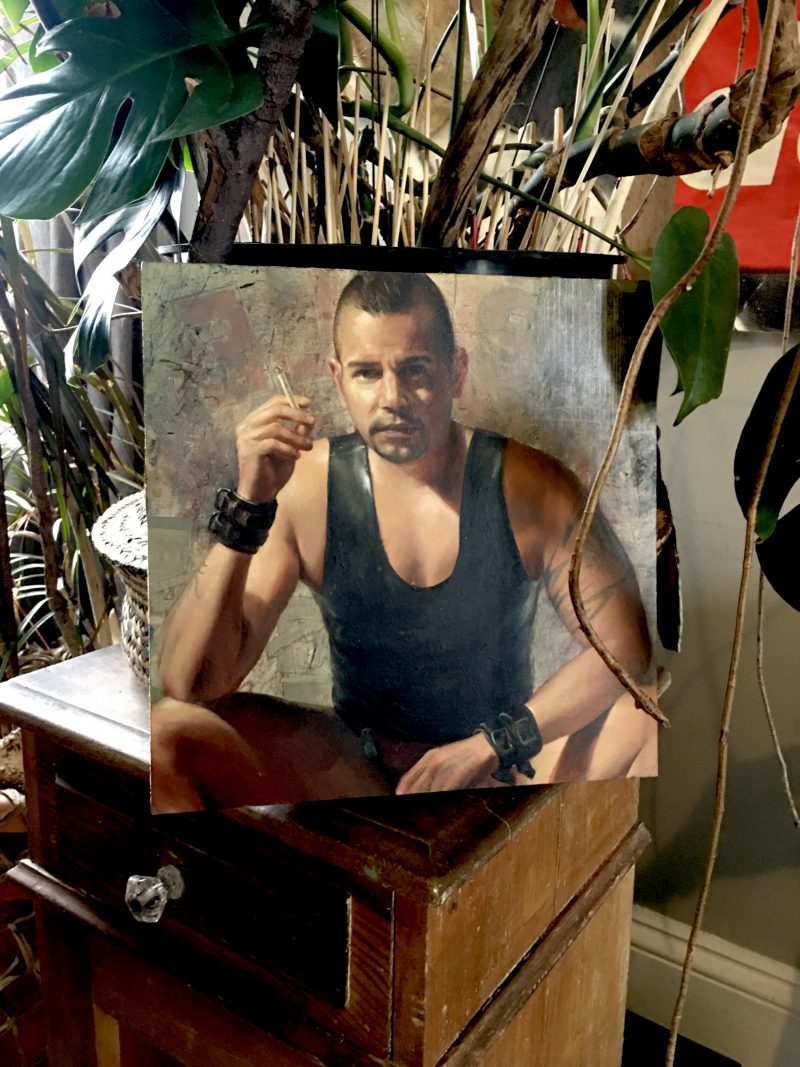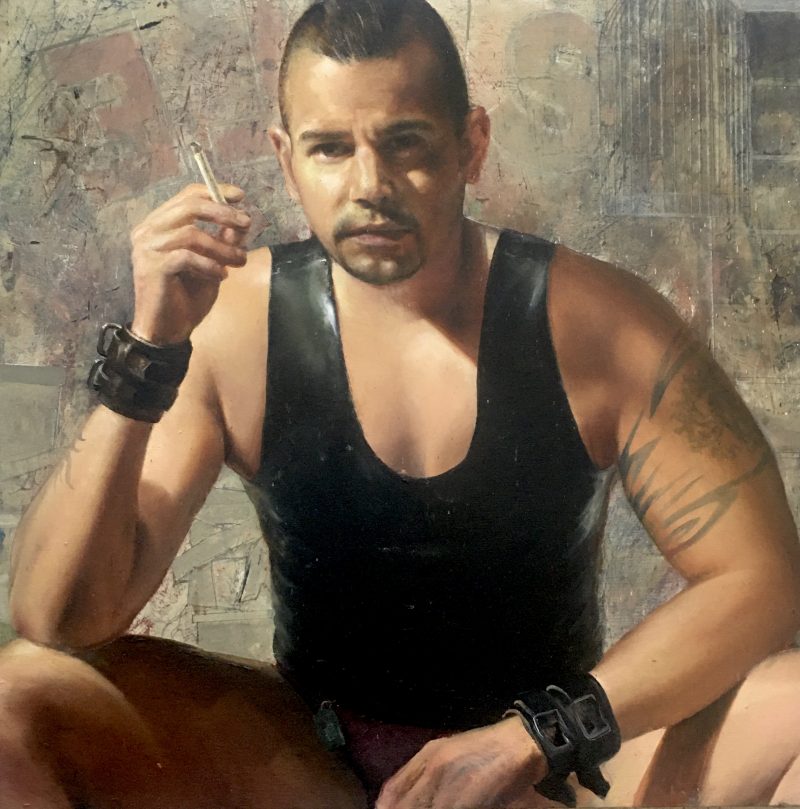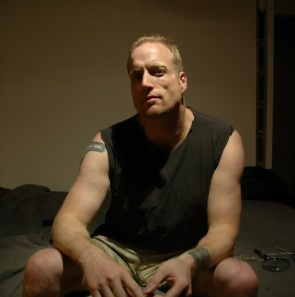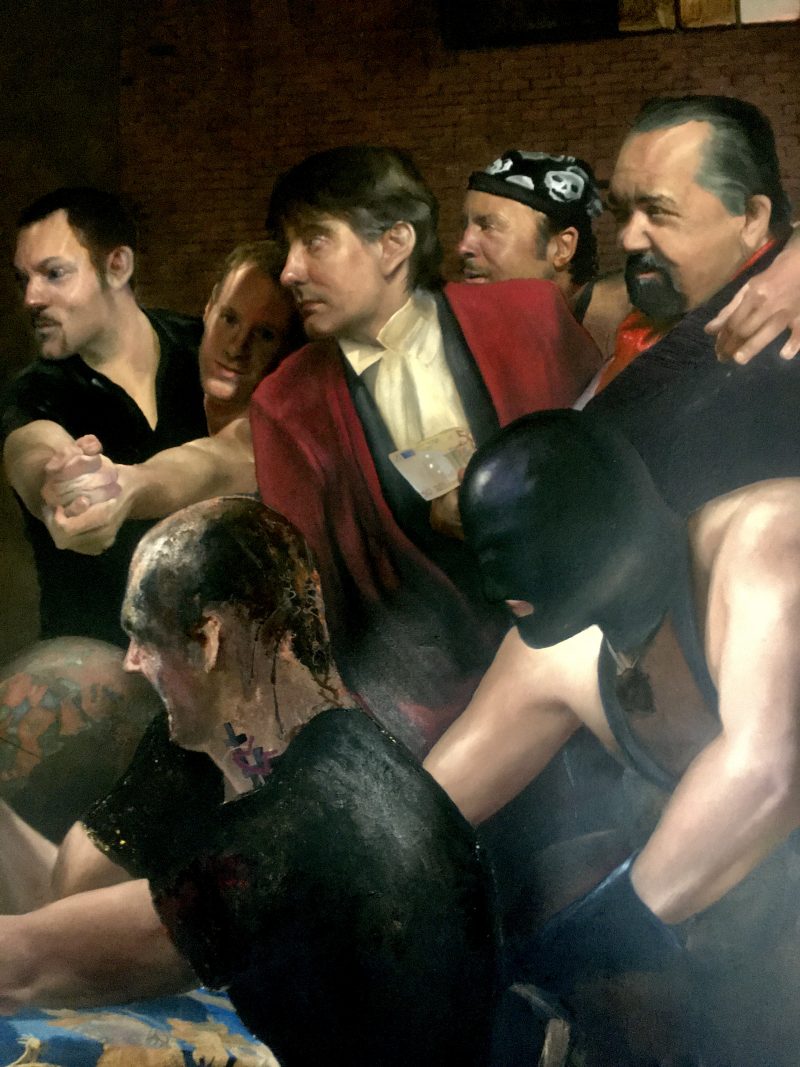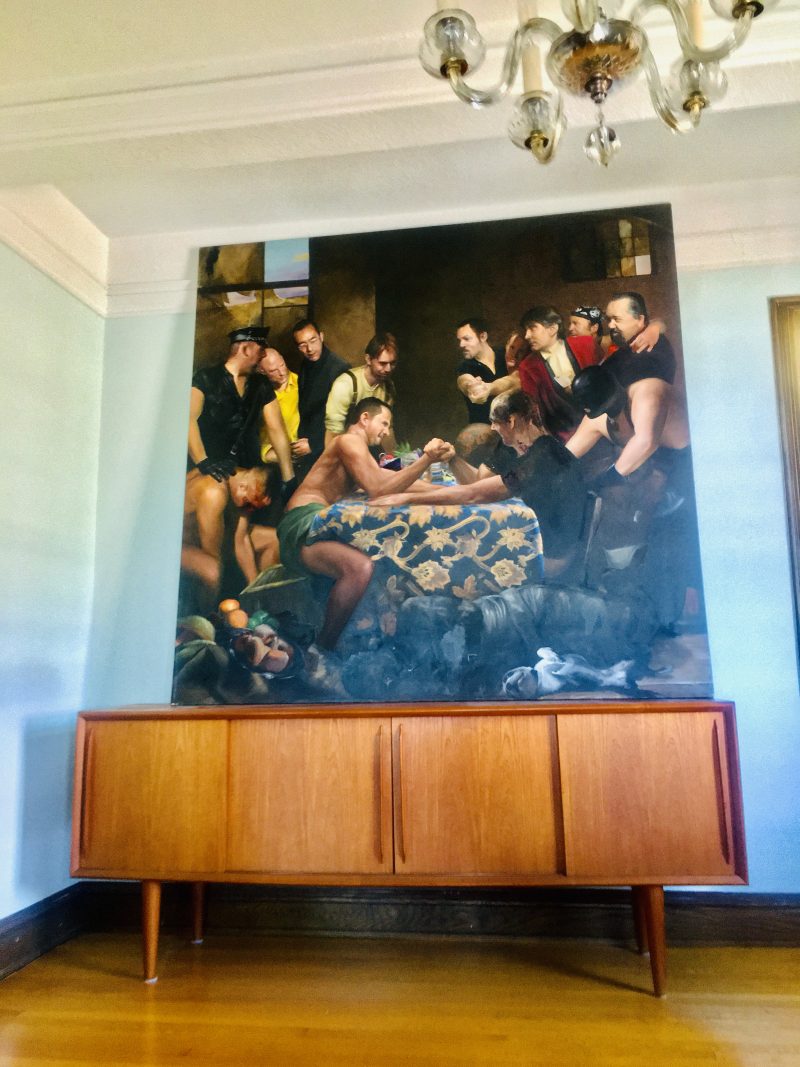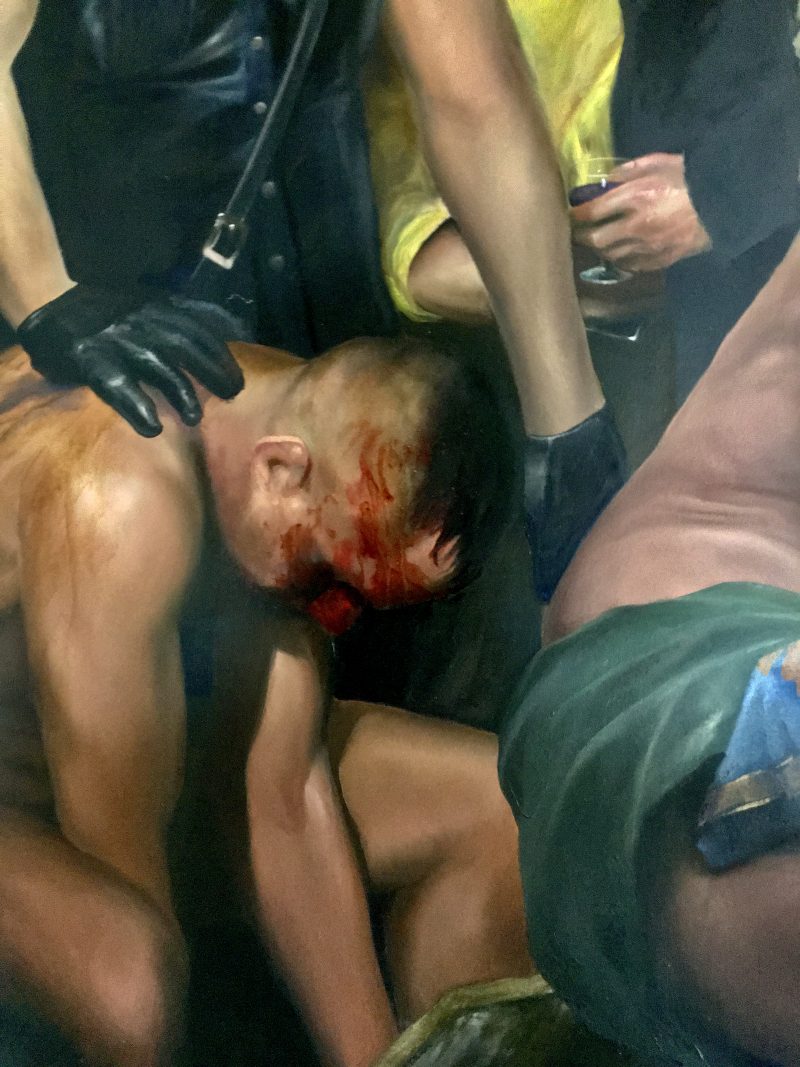James Huctwith (b. 1967), Toronto, Canada
- James Huctwith (Toronto, Canada), ‘Dan Getting His Head Shaved ‘ 2008, Oil on Wood Panel, 12 x 12 inches. Signed, dated & titled in black marker on verso. Currently in Ottawa, Canada. USD$1350
- James Huctwith (Toronto, Canada), ‘Fetish Sales‘ 2009 (dude with cigarette), Oil on Wood Panel, 12 x 12 inches. Signed, dated & titled on verso. Currently in Ottawa, Canada. USD$1350
-
James Huctwith (b. 1967), ‘The Arm Wrestlers’, 2005, Oil on Canvas, 70″ Height x 71″ Width.
Signed & dated on verso. Currently in Ottawa, Canada. Asking USD$12,000
Born in rural southern Ontario, Canada in 1967, James Huctwith is a painter in the realist tradition. From 1986 to 1989, he studied fine art at the University of Guelph’s College of Art in Ontario, primarily in architecture and art history and theory. Huctwith started painting and exhibiting in the early 1990s in Vancouver. Relocating to Toronto in 1995, he was represented by the O’Connor Gallery where he regularly exhibited his emotionally and physically explicit work for a decade.
After a period of personal disruption and change, Huctwith joined Vancouver’s Gallery Jones in the spring of 2005. He stayed with the gallery for two years, during which time he exhibited a series of non-figurative works. Beginning in 2006, Huctwith was also  represented for two years by Montreal’s Galerie Harwood, where the work he exhibited consisted primarily of interpretations of the still life genre. In 2007, he ended his relationship with the O’Connor Gallery.
represented for two years by Montreal’s Galerie Harwood, where the work he exhibited consisted primarily of interpretations of the still life genre. In 2007, he ended his relationship with the O’Connor Gallery.
Feeling a need to recapture his connection with his work, James Huctwith returned to the province of Ontario, placed his previous work with Toronto’s Antonio Arch Fine Arts, and signed up with Ottawa’s La Petite Mort Gallery. His first solo show of figurative work at the Petite Mort Gallery in the fall of 2009 was a success. Huctwith’s work, now published and regularly reviewed, is collected internationally with many works in private collections.
Huctwith’s current realist work, both figurative and portraiture, is done with an emphasis on historical techniques. His canvases of male figures are moody, masculine, and mysterious. While a sense of calmness is presented in Huctwith’s scenes, there is often a lurking undercurrent of uncertainty and conflict.
Statement:
This recourse continues my love of working with the human face and figure. It works with historical techniques and means as well, which is pretty much the unbending way I work these days. That’s a mixed blessing in the early 21st century, as being a realist romantic painter isn’t quite what it used to be. Then again, people aren’t just what they used to be, either. At least not under the surface. Or, society, either. So, maybe we’re all keeping in step.
I think it’s really interesting how synthetic our world has become, in what’s called the First World. From every angle, in every place, through every thing, there’s usually something highly artificial altering the works. This includes us, as people.
People used to have to deal quite closely with the objects of their attention. Now, we’ve got an electronic intermediary to negotiate between ourselves and a great many things. It’s not just the computer – from housepaint to bottled vitamins, hydroponic tomatoes to romance novels, flatscreen memories and emotions to programmed salespeople – we are saturated in body, mind and possibly soul, by complex manufacturing. Chemicals, money-made images, engineering, searchbots, mass psychology, virtual travel…this is all pretty fascinating.
As a ‘realist’ painter, that puts me in an interesting position.
I also think this near somewhat science-fiction reality (at least a bit sci-fi in my eyes) is what realism now has to include if it’s going to be realistic at all.
These paintings are loaded with disquiet, collisions, uncertainty and up-to-date lies. They’re mediations between extra-human or poisonous influences, I suppose, seen through the lens of the human.
- James Huctwith
